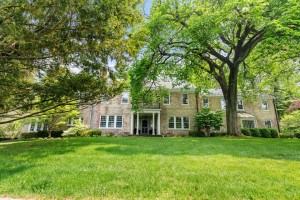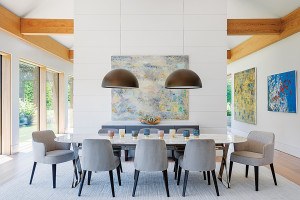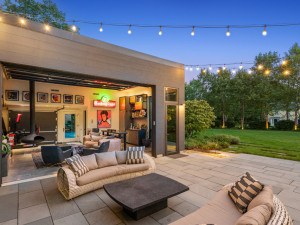Storied Renaissance
For the Four Seasons Hotel’s new restaurant, design master Ken Fulk fashions a vibe that hearkens back and takes cues from the landscape.
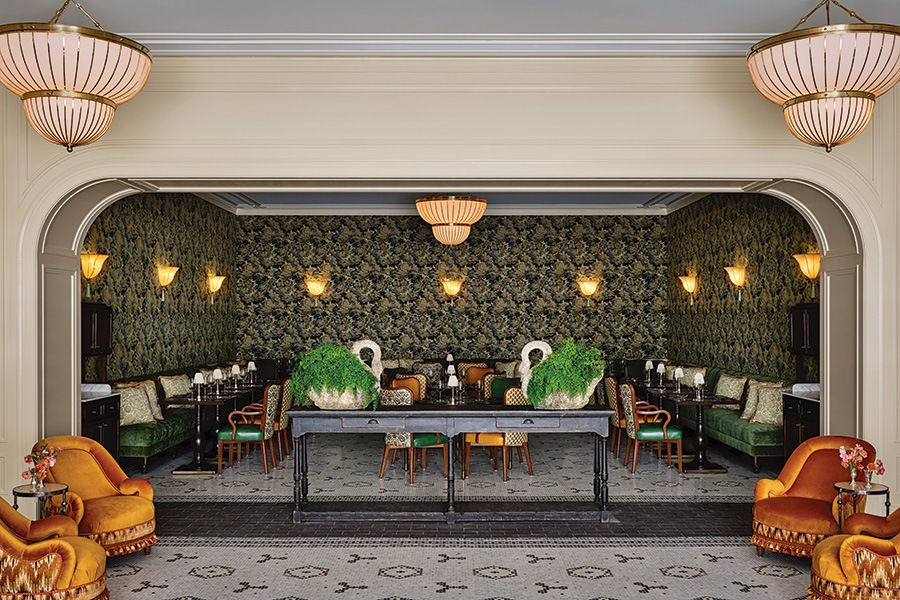
Photos courtesy of Four Seasons Hotel Boston
In 1989, after graduating college, Ken Fulk moved to Boston for a job in marketing, where he lived—above his means—in an apartment on Commonwealth Avenue. “Back then, there were touchstones in the city that seemed so impenetrable to me,” he recalls. “They were old-fashioned, wonderful places where the fancy people went.”
One of those places was the Four Seasons Hotel Boston on Boylston Street. Occasionally, when he was dressed up, Fulk would go to the hotel’s former restaurant, the Bristol. “I’d feel like I was one of the fancy people for a while, even when I clearly wasn’t,” he says. So it was “one of those ‘pinch me’ moments” when he was asked by the Four Seasons to conceive a new restaurant and reimagine the hotel’s common areas.
Fulk, who has no formal design training, moved to California in the 1990s and found himself propelled into a design career that’s garnered him global recognition. While he’s a master at creating memorable interiors with layers—upon layers—of interest, Fulk is much more than an interior decorator; his multidisciplinary firm includes a branding and graphics team, artists, and event consultants. At the core of every endeavor he undertakes is a strong narrative. “We’re storytellers,” says Fulk, who was a history and English major. “We start every project with words.” He calls his projects movies because, essentially, “we’re writing a script that we bring to life.”
The story behind Boston’s beloved Four Seasons is inspired by the Back Bay’s late-Victorian architecture and the Public Garden across from the hotel. “The concept was to give the hotel the feeling of a grand residence from the 1900s, with a real sense of arrival,” Fulk says. A porte-cochère and gas lanterns were installed at the entrance, along with outdoor seating and large-scale planters. Antique black-and-white marble and limestone floors traverse the entry into the reception area to evoke the sense of bringing the Garden indoors. Behind the leather-upholstered check-in desk is an impressionist-inspired mural capturing the Garden’s flora and fauna with trees surrounding the lagoon where swan boats glide under the footbridge.
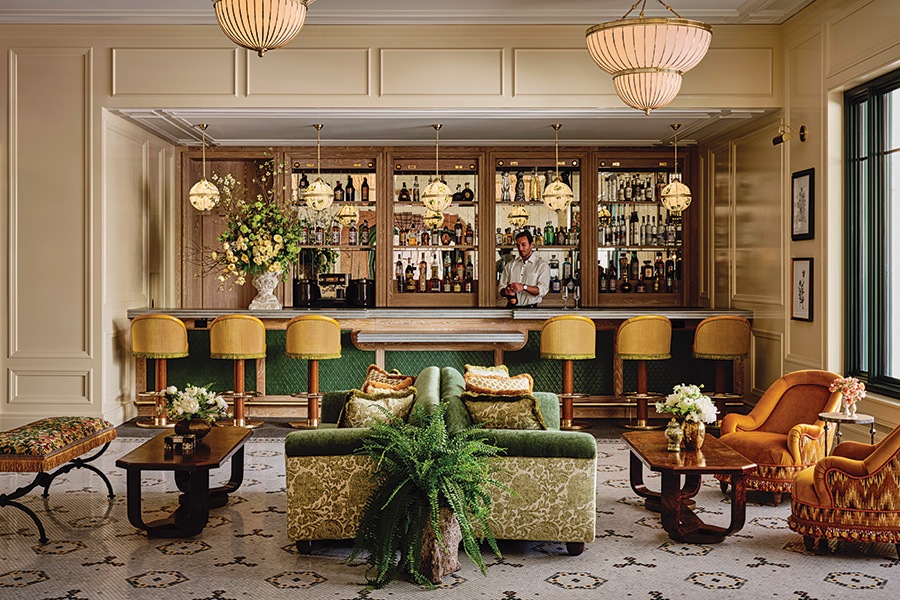
Fulk’s team designed the floor’s marble mosaic tile; the pendants above the bar were custom-made by Woka; the armchairs, designed by Fulk, are upholstered in Watts of Westminster “Bargello” fabric with Samuel & Son’s “Orsay” silk tassel fringe.

Off the reception area, the limestone archway opens to the library, where walls are painted Benjamin Moore’s “Colonial Verdigris” in high gloss. The unlacquered-brass shelving system was crafted by Rhode Island-based Palmer Industries.
Limestone block archways were created to define the expansive common area into a series of living rooms where guests can casually congregate. To the right of the reception area is the new restaurant, Coterie. The name, devised by Fulk and his team—who established the identity for the entire place from the cocktail napkins and menus to the teacups and flatware—means an exclusive circle with a common purpose in French. The intimate space evokes a European-style café, timeless and elegant, with, Fulk says, “a delicious palette of colors that was inspired by nature.” Fabrics are posh, decadent, and deeply distinctive. “We wanted to bring that same level of luxury—priceless velvets and beautiful trims—that we’d use in an elegant residence,” he says. “We had to convince them [the hotel owners] we could do it in a manner that can survive hospitality.”
The dining room walls are sheathed with a garden floral motif, a wallcovering that nods to the late-19th-century Aesthetic Movement. A soft glow emanates from vintage lighting, and a gallery of botanical illustrations and portraits of storied Boston writers and artists drawn by members of Fulk’s team is arranged throughout the space. Handpainted floral pendants hang above the zinc-topped bar, and plush seating forms a sumptuous lounge area with views of the Garden.
Fulk says that he and the Four Seasons share a deep-rooted sensibility that revolves around creating experiences and imprinting memories. “Boston is a wonderful, historic city, and it’s really evolved over time, so here it was important to include that dash of modernity while anchoring [the design] in the fabric of history,” he says.
Decades ago, Fulk never dreamed he’d work in Boston. Yet the Four Seasons is but one of a few dazzling projects he’s recently helmed in the Back Bay, including the ’Quin and Contessa, the Newbury’s rooftop bar. Next up, he’s setting the scheme for a grand private brownstone in the neighborhood. “One of the great highlights of my life and career,” he says, “is that I get to contribute to a city I love and hold dear.”
First published in the print edition of Boston Home’s Fall 2023 issue.
